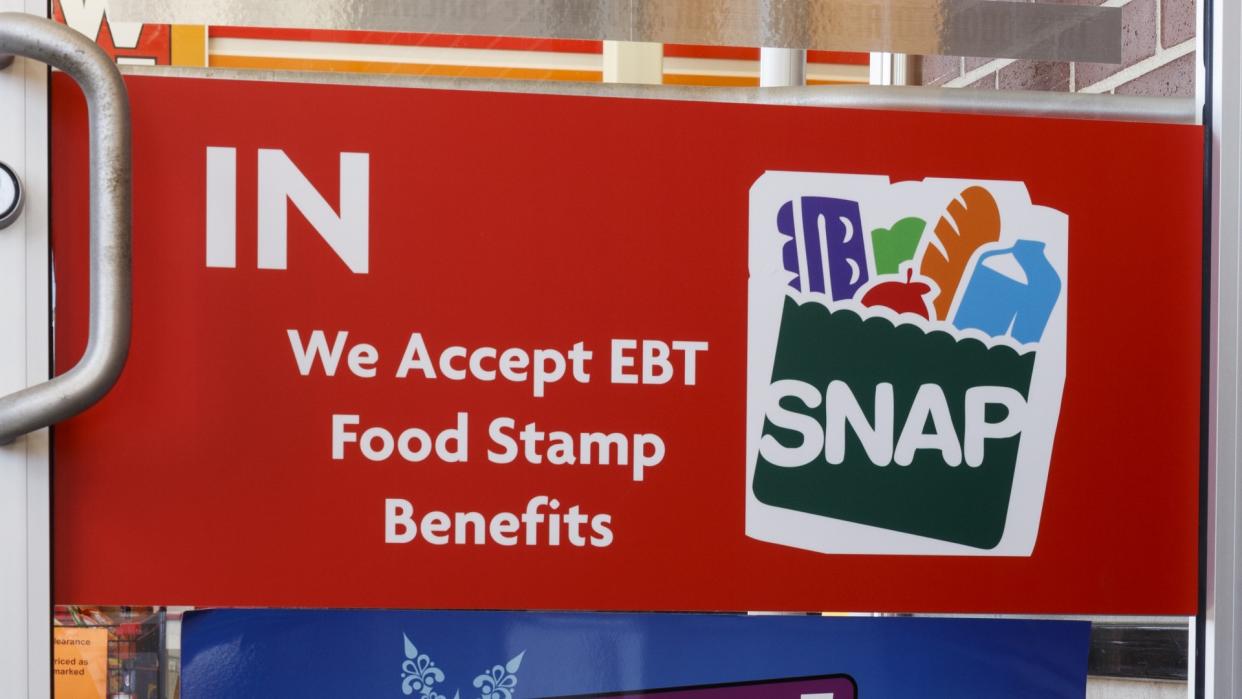
The federal government’s Supplemental Nutrition Assistance Program, or SNAP, formerly called “food stamps,” helps families to afford fresh, healthy food and ingredients to prepare meals at home. The money can be spent on foods such as bread, dairy, meat, fish, poultry, snacks, non-alcoholic beverages and many other items.
See: Surprising Things You Can Buy With Food Stamps
Find: 3 Signs You’re Serious About Raising Your Credit Score
SNAP EBT cards are accepted at many places across the country, including gas stations, grocery stores, and even some online grocers. But not every grocery store accepts SNAP. The federal government does not mandate private businesses to accept the form of payment, the same way they don’t mandate stores to accept credit or debit cards.
However, it can be in a store’s best interest to accept SNAP EBT. A study from market research firm IRI discovered that SNAP purchases account for 12% of food and beverage sales both online and in stores. During the pandemic, SNAP shoppers drove 19% of dollar growth for retailers that accepted EBT payments, while other shoppers drove just 1% of growth, CNBC reported. So why doesn’t every grocery store accept SNAP?
First, the store must apply for the program and be authorized by the USDA to participate. They also must meet one of two criteria, TheGroceryStoreGuy.com reports — they must either have at least three units of three different varieties for each staple food category. So, a smaller store that only carries, for example, one variety of cereal and one type of bread, would not qualify.
Take Our Poll: Do You Have a Second Job or Backup Plan in Case You Are Laid Off?
Otherwise, they must have more than 50% of their total gross retail sales from staple foods.
While most grocery stores qualify under the first criteria, it can be tricky for a smaller store to meet the requirements. First, they must carry at least three varieties of food across four categories:
-
Bread or cereal.
-
Meat, poultry or fish.
-
Dairy products.
-
Vegetables or fruits.
Additionally, those varieties must include three units of one perishable food choice in two categories. Perishable foods would include anything that requires freezing or refrigeration. So, if a store only carries canned vegetables, with no fresh fruit or vegetables, it will not qualify.
In some rural areas where lower-income families have limited access to food, the government may loosen these requirements and allow retailers to accept SNAP EBT. In this way, they can assure SNAP beneficiaries in that area have access to the food they need through the program.
Stores that don’t accept SNAP EBT for payment either don’t meet qualifications or don’t want to go through the approval process. The license to accept EBT must then be renewed every five years and it requires a visit from a government agent to verify qualifications.
If a store feels it won’t derive significant revenue through SNAP EBT customers, perhaps because it is located in a higher-income neighborhood, it may not bother to go through the application process. However, with so many grocery stores and online retailers accepting SNAP, it shouldn’t be hard to find one that does.
More From GOBankingRates
This article originally appeared on GOBankingRates.com: Why Doesn’t Every Grocery Store Accept SNAP EBT Food Stamps?
